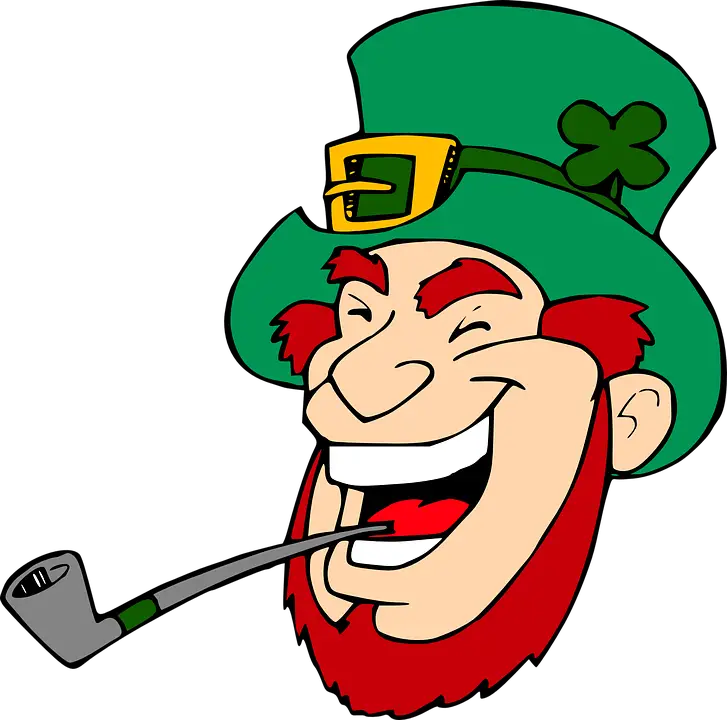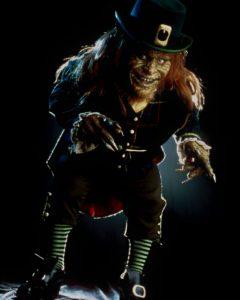Share the Lore!
By: Jordan Joly
Are Leprechauns Real?
We’ve all heard the stories about a miniature Irish trickster, specifically around St. Patrick’s Day, that hides a pot of gold at the end of the rainbow at least once in our lifetime.
The Leprechaun is thought to be mythical and strange. Still, the old tales of the Irish tell otherwise, saying this little swindler is known for first being spotted as far back as the 600s and is considered real in Irish culture.
Saying this, you may begin to think you’ve had a little too many brews when you begin to ponder the simple question that has been on many people’s minds for decades. Are leprechauns actually real?
To tell the truth, no, there isn’t any scientific evidence that suggests the existence of such a creature to have ever roamed the earth.
But for those who have witnessed “sightings” or practice certain holidays, the tale is very much alive.

What is A Leprechaun?
To many, Leprechauns might be the stuff of a tired Irish cliché and St. Patrick’s Day marketing scheme. But the truth behind the festive holiday that conjures these, what are known to be malignant spirits.
There is a rich history that seems to follow the little Irish fellow that is said to stem from fact more than fiction.
Legend has it, the Leprechaun is a small, bearded man who holds greed and ill intent in their heart. Running through the woods to cause mischief and thievery to gain more gold for their collection.
All leprechauns are recorded as a male species which travels alone and possesses magic powers. They are known for wearing what appears to be a green suit with a matching hat and possibly holding a smoking pipe.
Many believe in the myth that when finding a gold pot at the end of the rainbow, you can claim it as your own.
But a leprechaun is said to barter with your soul rather than give up their gold, so it is best to steer clear from those rainbows and possible gold coins.
Do They Always Wear Green?
Are you all dressed in green this shamrock season? Have you gone searching your luck in trying to find four-leaf clovers? If your answer is “yes,” then you are truly celebrating this holiday the old fashion way.
In more places than one, the color green can be found flooding the streets during St. Pattie’s Day.
Although it is fun to dress up and match with your friends, have you ever wondered why Leprechauns are always shown wearing green?
It has been said that before the late 1850s, leprechauns could be described as minor, elvish men who wore red instead of the green suits they are portrayed to be wearing now.
This is said to have been changed by an Irish poet in the late 1700s who goes by William Allingham, who wrote tales of a leprechaun dressed in green with buckled shoes and leather apron.
This image stuck with people around the world, becoming the everlasting fashion of leprechauns.
Traditions and Beliefs
In this day and age, St. Patrick’s Day is considered a vastly widespread celebration of the Irish culture, filling the streets with festivities and home-grown traditions.
Amongst the billions of people who don themselves in green, wearing four-leaf clovers around their necks, few actually know the meaning behind these traditions and how leprechauns brought it all together.
The end of the rainbow- the most common myth when looking up Leprechauns is that, if you are quick enough, you will be able to find their stash of gold coins sitting in a pot at the end of a rainbow.
According to the folklore, leprechauns were a cranky sort of trickster who wouldn’t want to be messed with.
A fun-loving style of Leprechaun would soon arise, though, after Walt Disney released the film Darby O’Gill & the Little People in 1959, where it portrayed a good-natured version of the Leprechaun!
Shamrock and leaves of four- according to most legends, St. Patrick chose a three-leafed clover to symbolize the holy trinity.
Being that it is a sign of peace, love, and hope, old legends say that leprechauns, being natural tricksters, were attracted to these magical flowers and even are the owners of many four-leaf clover gardens which is why Ireland is said to be such a lucky place.
Kiss me I’m Irish- The famous saying “Kiss Me, I’m Irish” is often referred to as The Blarney Stone, otherwise known as the “Stone of Eloquence.”
This mythical rock can be found within the Blarney castle, where legend tells the tale that placing your lips upon the rock’s face will bring you good luck and prosperity.
Giving kissers the powers of becoming similar to a smooth-talker and losing the ability to be at a loss for words.

Did You Know?
In America, these bearded spirits have been acquainted with St. Patrick’s Day since the holiday began. To honor such a long-standing myth, here are some lucky facts about these Irish fellows that many people might not know!
1. Leprechaun literally means “small body“: The word Leprechaun is believed to be one of many variations of the Irish word, lūchorpān—lū, meaning small, while Corp, stands for body. Thus, leprechaun really means a small man.
2. Leprechauns can be generous: Leprechauns are surprisingly known to have a heart when you show them a kindness; in some cases, they might even grant you three wishes.
3. Someone has claimed to find real Leprechaun remains: In the 1980s, a local businessman located in Carlingford, Ireland, actually made a claim of finding evidence of a real-life leprechaun.
So, Do Leprechauns Exist?
It is hard to say whether or not these creatures genuinely walked the earth or if they ever have before. Though many people do not believe in such a being, that’s not to say some do.
There have been many stories of sightings worldwide. Whether or not you personally will ever get to see a leprechaun, only time will tell.
In any way, a green cocktail is said to be a great place to start!
